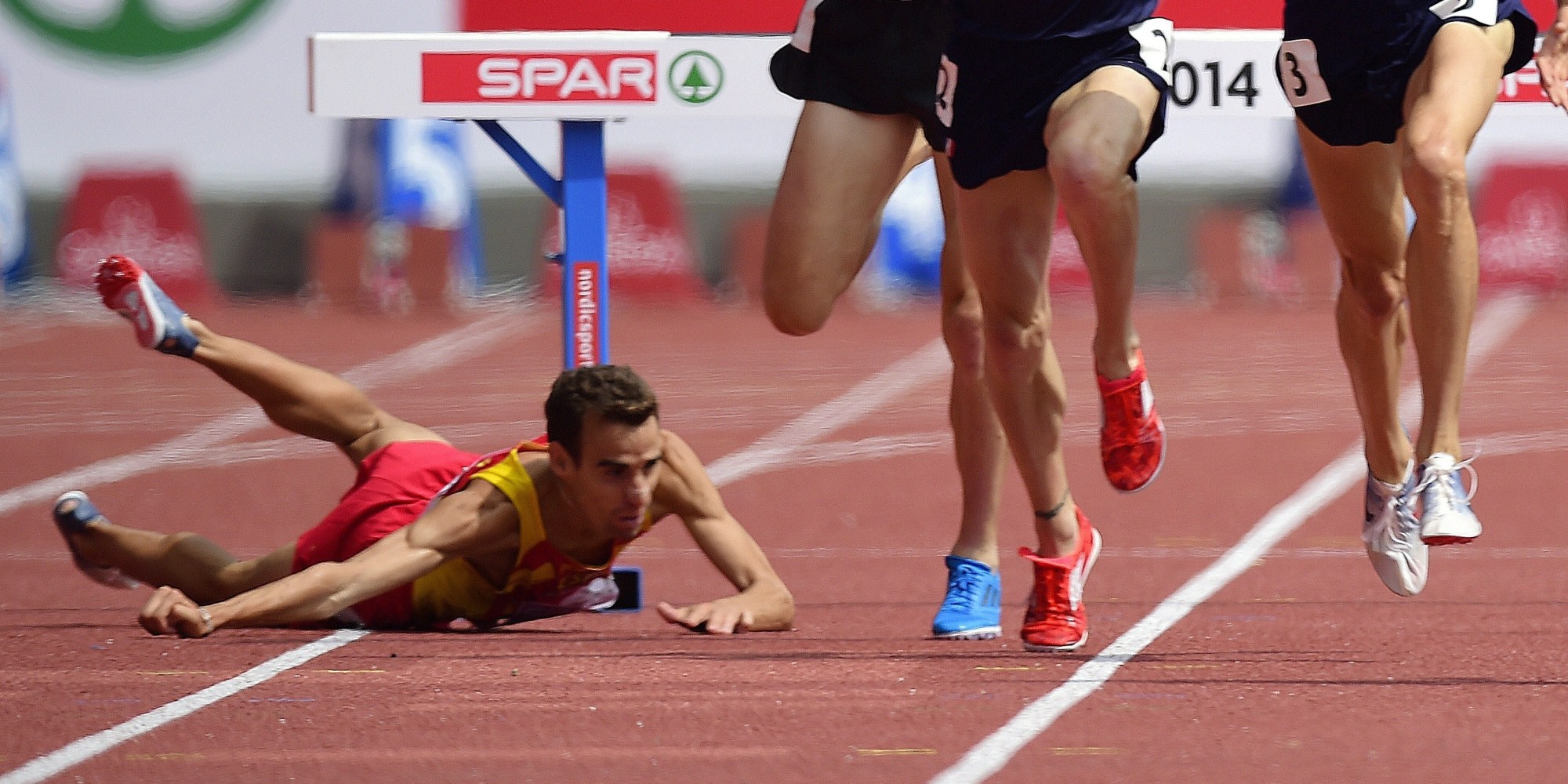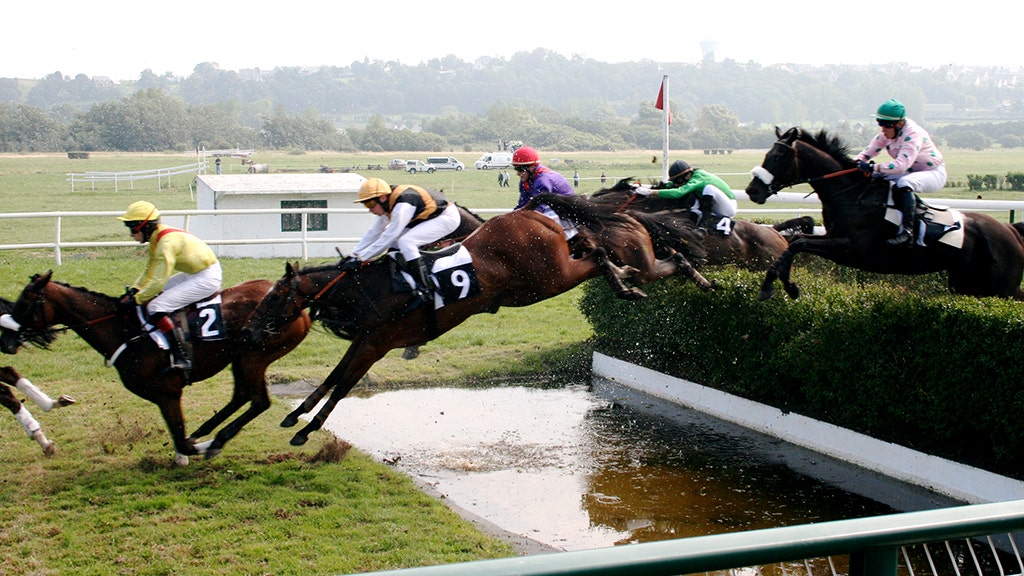Steeplechase Fall Mechanics

Steeplechase racing, a thrilling and demanding equestrian sport, is known for its unique obstacles, including water jumps and hurdles. However, the very nature of this discipline also carries inherent risks, with falls being a common occurrence. Understanding the mechanics behind steeplechase falls is crucial for both riders and spectators, as it helps to mitigate risks and appreciate the complexities of this sport.
Common Causes of Falls
Falls in steeplechase racing can be attributed to various factors, including rider error, horse error, and external factors.
- Rider Error: A rider’s lack of experience, poor judgment, or improper technique can lead to falls. This includes situations where the rider fails to properly position themselves, misjudges the obstacle, or loses control of the horse.
- Horse Error: Horses can stumble or refuse to jump, leading to falls. This might occur due to factors such as fatigue, injury, or a lack of experience with the course.
- External Factors: The terrain, weather conditions, and even the presence of other horses can contribute to falls. A slippery surface, a sudden gust of wind, or a horse spooking at another competitor can all lead to a rider being unseated.
Biomechanics of a Steeplechase Fall
The impact forces involved in a steeplechase fall can be significant, with the rider’s body experiencing rapid deceleration and potentially sustaining injuries.
- Impact Forces: When a horse falls, the rider’s body is thrown forward and downward, resulting in a high-impact collision with the ground. The force of the impact can vary depending on the speed of the horse, the angle of the fall, and the surface the rider lands on.
- Body’s Response: The body’s response to these forces depends on several factors, including the rider’s posture, muscle activation, and the protective gear they are wearing. Proper riding attire and safety equipment can help to absorb some of the impact forces and minimize the severity of injuries.
Types of Steeplechase Falls
Steeplechase falls can be categorized based on the specific event that triggers the fall.
- Trip over the Hurdle: A common type of fall occurs when a horse trips over a hurdle, causing the rider to be dislodged. This can happen due to a horse misjudging the hurdle, hitting the hurdle with its feet, or encountering a problem with the hurdle itself.
- Loss of Balance: Falls can also occur when a horse loses its balance, either due to a sudden movement, a slippery surface, or a rider’s error in maintaining control. This can lead to the horse stumbling and the rider being thrown off.
- Rider Error: As mentioned previously, rider error is a significant factor in many steeplechase falls. This can include a rider misjudging a jump, failing to maintain a secure position, or losing control of the horse due to a lack of experience or poor technique.
Steeplechase Fall Consequences

Steeplechase racing, known for its thrilling jumps and high speeds, also carries a significant risk of falls. These falls can have serious consequences for both horse and rider, ranging from minor injuries to life-threatening situations. Understanding the potential injuries and the impact of falls is crucial for ensuring the safety of all involved in this exciting equestrian sport.
Injuries Resulting from Steeplechase Falls
Steeplechase falls can result in a wide range of injuries, affecting both horse and rider. The severity of these injuries can vary depending on the speed of the fall, the terrain, and the impact point.
Rider Injuries
- Head and Neck Injuries: Concussions, spinal cord injuries, and skull fractures are common due to the impact of the fall and the rider’s head striking the ground or obstacles.
- Fractures: Broken bones, particularly in the arms, legs, and ribs, are frequent injuries in steeplechase falls.
- Soft Tissue Injuries: Sprains, strains, and muscle tears are common, especially in the legs, shoulders, and back.
- Internal Injuries: Organ damage can occur in severe falls, particularly in the abdomen and chest.
Horse Injuries
- Leg Injuries: Fractures, sprains, and tendon injuries are common, particularly in the legs, due to the impact of the fall and the horse’s weight.
- Head and Neck Injuries: Concussions, skull fractures, and spinal cord injuries can occur, especially if the horse’s head hits the ground or an obstacle.
- Internal Injuries: Organ damage can occur in severe falls, particularly in the abdomen and chest.
Frequency and Severity of Steeplechase Falls
While precise statistics on steeplechase falls are limited, studies and reports from racing organizations highlight the significant risk associated with this sport.
- Fall Rate: Research suggests that falls occur in a significant percentage of steeplechase races, with estimates ranging from 10% to 20% of races resulting in at least one fall.
- Severity of Injuries: While some falls result in minor injuries, others can lead to serious consequences, including permanent disabilities and even fatalities.
Consequences of Falls: Immediate and Long-Term
Steeplechase falls can have immediate and long-term consequences for both horse and rider.
Immediate Consequences
- Pain and Shock: The immediate impact of the fall can cause significant pain and shock, potentially leading to a loss of consciousness.
- Bleeding and Trauma: Open wounds, internal bleeding, and other trauma are possible, requiring immediate medical attention.
- Emotional Distress: The experience of a fall can be emotionally distressing, leading to fear, anxiety, and post-traumatic stress disorder (PTSD).
Long-Term Consequences
- Physical Disabilities: Severe injuries can result in permanent disabilities, affecting mobility, balance, and overall health.
- Psychological Impact: The fear of falling and the emotional distress associated with falls can have a lasting psychological impact, potentially leading to anxiety, depression, and difficulty returning to riding.
- Career Impact: Falls can end a rider’s or horse’s racing career, leading to financial hardship and emotional distress.
Steeplechase Fall Prevention and Mitigation

Steeplechase racing, with its unique combination of speed, jumps, and terrain, presents inherent risks. Falls are a significant concern, leading to injuries for riders and horses. While the thrill of the sport lies in its challenges, safety remains paramount. Extensive efforts are dedicated to mitigating the risks associated with falls, ensuring a safer experience for both riders and horses.
Safety Measures in Steeplechase Racing
Steeplechase racing organizations, along with governing bodies, implement various safety measures to reduce the risk of falls. These measures encompass regulations, equipment standards, and course design considerations.
- Rider Safety Gear: Riders are mandated to wear protective gear, including helmets, body protectors, and boots, to minimize the impact of falls. Helmets, specifically designed for equestrian sports, are essential in protecting riders’ heads during falls.
- Horse Equipment: Equine equipment, such as saddles, bridles, and stirrups, undergoes rigorous inspection and adherence to safety standards. Properly fitted and maintained equipment ensures the horse’s comfort and stability during the race, reducing the risk of falls.
- Course Inspection: Thorough pre-race inspections of the course are conducted by experienced officials. These inspections ensure the safety of jumps, fences, and the overall terrain, addressing any potential hazards that could lead to falls.
- Veterinary Checks: Horses undergo pre-race veterinary checks to ensure they are fit and healthy for competition. These checks aim to identify any potential health issues that could increase the risk of falls.
- Emergency Response: Adequate emergency response teams, equipped with medical personnel and ambulances, are stationed at the racecourse. These teams are trained to respond promptly to any incidents, including falls, providing immediate medical attention.
Rider Techniques and Strategies
Riders employ various techniques and strategies to minimize the risk of falls. These techniques focus on horse handling, jump approach, and maintaining balance.
- Horse Handling: Riders must establish a strong connection with their horses, ensuring responsiveness and control. Effective communication and consistent training help riders maintain control and avoid falls.
- Jump Approach: Approaching jumps with the right speed and trajectory is crucial. Riders must adjust their approach based on the jump’s size, shape, and terrain, ensuring a smooth and controlled transition over the obstacle.
- Balance and Posture: Maintaining a balanced and secure posture is essential. Riders must stay centered in the saddle, keeping their weight balanced over the horse’s center of gravity. This minimizes the risk of being thrown from the saddle during a fall.
Course Design and Hurdle Construction
Course design and hurdle construction play a vital role in preventing falls. Careful consideration is given to the layout, jump placement, and obstacle design.
- Jump Placement: Strategic placement of jumps minimizes the risk of falls. Jumps are positioned to allow for adequate approach and landing areas, reducing the likelihood of horses stumbling or losing their footing.
- Hurdle Construction: Hurdle construction is designed to ensure stability and safety. Materials used in the construction of hurdles are chosen for their strength and durability, minimizing the risk of the hurdle collapsing or breaking during the race.
- Terrain Considerations: The terrain of the course is carefully assessed and maintained. Obstacles are placed to avoid uneven ground, steep inclines, or potentially hazardous areas that could increase the risk of falls.
A steeplechase fall can be a real heart-stopper, especially when you see the water jump involved. It’s a reminder of the risk these athletes take, but also the incredible resilience they show. Think about Soufiane El Bakkali , a Moroccan runner who’s known for his grit and determination.
He’s a testament to how even a fall can be a learning experience, pushing you to come back stronger and more focused. After all, the steeplechase isn’t just about speed, it’s about navigating obstacles, and those falls can teach you how to do just that.
A steeplechase fall can be a dramatic sight, with athletes tumbling over barriers and landing hard on the track. It’s a testament to the strength and resilience of these runners that they can often get back up and continue, just like steeplechase girma has done throughout his career.
These falls, while scary, are a reminder of the inherent risk in this thrilling event, and they often highlight the mental toughness required to overcome adversity and keep pushing towards the finish line.